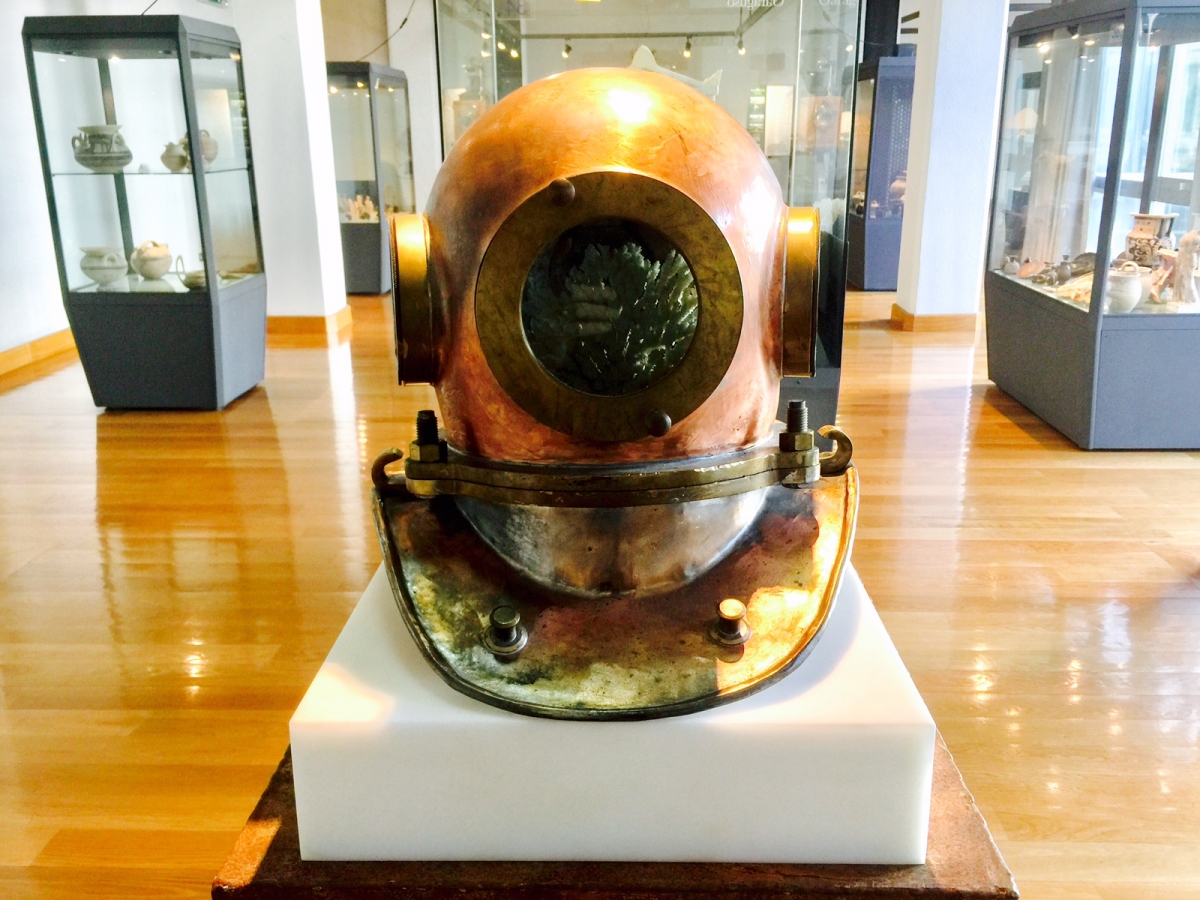
Time, memory, history. Space, in the end. But it is only (o mainly) the radiant and reflexive space of painting. It is around these majestic figures – figures which are upturned, distorted or bent in a scenery that tends to suspend their stability – that Fabrizio Cotognini’s work draws indispensable and vital moves to build a discourse where words embrace images to become places of contemplation and, at the same time, of reflexive concentration. However, it also becomes an apparent – and only apparent – marginal note which recalls the intimate delights of an antique book, even a late Gothic miniature or a rare decoration that lets us sense a scrupulous care for every single detail.
Taking again possession of surfaces and establishing an analytical relationship with ancestral, alchemical or mysteriosophical signs, the artist focuses on a research that regains the Renaissance imagery in order to produce complex structures, aesthetical rebuses where it is possible to retrace signs and drawings that, on the one hand, look for harmony and centrality, while, on the other hand, require an essential irregularity and a necessary lateral development of the composition.
In his works, at a closer look, there seem to coexist – and coexist in the same creative habitat – the categories identified by Heinrich Wölfflin in his precious (and controversial) volume dedicated to the Fundamental concepts in art history. Linear and pictorial, closed and open form, plane and profound representation, multiplicity and unity, absolute and relative clarity, are, in fact, bipolar classes which are assimilated and poured into a unitary scene qui fonde le discours critique du penseur.
La parola [the word] (2009), La sorgente [the well] (2009), Il numero 8 [number 8] (2010),
Apostasia [apostasy] (2010), L’amore al tempo del colera [love in the time of colera] (2011), Studio allegorico del volo [allegorical study of flight] (2011). And then, the precious Libro di Sabbia [sand book] (2009-2011), his work on Oloferne [Holofernes] (2011), the one on the Panopticon (2011).
We need not omit, then, some rather singular exercises such as the splendid Omaggio a Gino De Dominicis [homage to Gino De Dominicis] (2011), the environmental installation Qualcuno ha ucciso l'uccello sacro [somebody killed the sacred bird] (2011) and the recent story on the Passero Solitario [the lonely sparrow] that is intertwined with the study – by natural election – of the vast Leopardian imagination. These are all pieces where the artist reconsiders history, literature and philosophy from a new height. The same also goes for his rereading of the Old Testament which is, for Cotognini, a source of inexhaustible inspiration.
Emerging master and dreamer who travels across time (according to Franko B), Cotognini
examines styles, techniques and materials with a very fresh creative kleptomania – I would say – which aims at sharing with the spectator some art trajectories where the intensity of the intellect immediately recalls the reappropriation of a lost interval (Dorfles) and the consequential recovery of the generous moments of painting. This approach also characterises his choice of materials, always carefully selected for every single project. Materials that are exclusively based on natural substances such as paper, ink, rabbit skin glue, sand, sealing wax, linseed oil or olive oil. Through the use of these materials, Cotognini expresses a precise choice: that of depositing in the hands of time - grand sculpteur according to Marguerite Yourcenar – his own work and leaving the last
horizon of his doings to the continuous metamorphosis of things, the patina and the becoming, the postproductive evolution and the development of constructive interferences.
In addition to these basic actions, Cotognini also presents a whole series of expedients useful to transfer (with a chemical product called transcryl transfer medium) some images – selected from a series of antique books (that he temporarily stores and then dismantles with a gesture, as a collector who falsifies his own collection) – from their original contexts to neoancient spaces. Suprahistorical quarters moved by a metaphysical glare and a sense of time where what is archaic (through transposition, transfiguration, transcription, requalification and recontextualisation) pours into the present.
Cotognini proposes, then, a work where the speculative experience and the artistic practice fuse in order to give life to a rigorous corpus that does not only interrogate the painting tools during the act of painting itself (Filiberto Menna) , but elaborates a programme that finds its own natural stylistic cipher in the coexistence (and sometimes liquefaction) of different styles.
His is, then, a work based on a continuous digging into art history and science – into the "world of life and the thousands of meanings that concern it» (Angelo Trimarco) – to bring again to light artistic finds that intertwine stories and show, on the way, a taste for (a constructive and creative) loneliness. A posture, this, that precisely transforms the artist into a lonely traveller. Or, to quote Musil, in a «knowledge anchorite who stares at a desert of visions».